How to draw Octopus for kids - step by step - Fact - It has two eyes and four pairs of arms and, like other cephalopods, it is bilaterally symmetric. An octopus has a hard beak, with its mouth at the center point of the arms.
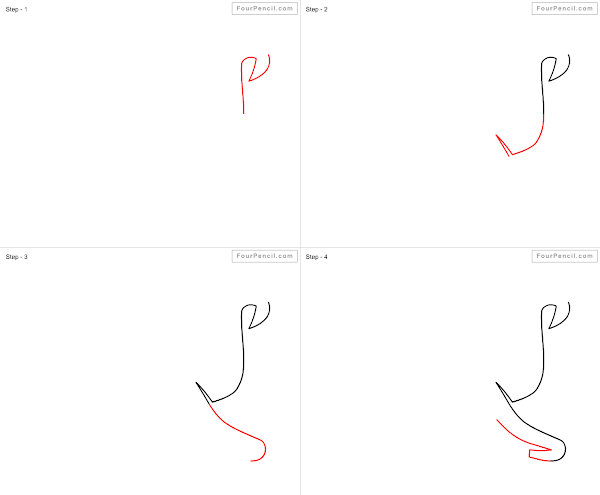
How to draw Octopus for kids - step by step - Fact - An octopus has no internal or external skeleton (although some species have a vestigial remnant of a shell inside their mantles), allowing it to squeeze through tight places. Octopuses are among the most intelligent and behaviorally flexible of all invertebrates.

How to draw Octopus for kids - step by step - Fact - Octopuses inhabit diverse regions of the ocean, including coral reefs, pelagic waters, and the ocean floor. They have numerous strategies for defending themselves against predators, including the expulsion of ink, the use of camouflage and deimatic displays, their ability to jet quickly through the water, and their ability to hide.

How to draw Octopus for kids - step by step - Fact - An octopus trails its eight arms behind it as it swims. All octopuses are venomous, but only one group, the blue-ringed octopus, is known to be deadly to humans.

How to draw Octopus for kids - step by step - Fact - Around 300 species are recognized, which is over one-third of the total number of known cephalopod species. The term 'octopus' may also be used to refer specifically to the genus Octopus.

How to draw Octopus for kids - step by step - Fact - Octopuses are characterized by their eight arms, usually bearing suction cups. The arms of octopuses are often distinguished from the pair of feeding tentacles found in squid and cuttlefish. Both types of limb are muscular hydrostats. Unlike most other cephalopods, the majority of octopuses – those in the suborder most commonly known, Incirrina – have almost entirely soft bodies with no internal skeleton.

How to draw Octopus for kids - step by step - Fact - They have neither a protective outer shell like the nautilus, nor any vestige of an internal shell or bones, like cuttlefish or squid. The beak, similar in shape to a parrot's beak, and made of chitin, is the only hard part of their bodies.
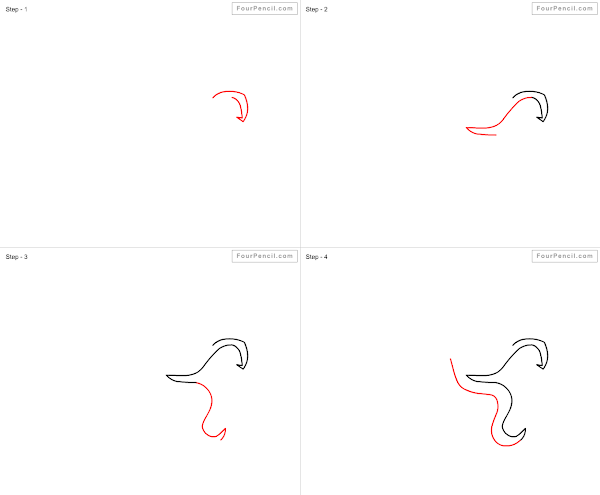
How to draw Octopus for kids - step by step - Fact - This enables them to squeeze through very narrow slits between underwater rocks, which is very helpful when they are fleeing from moray eels or other predatory fish. The octopuses in the less-familiar Cirrina suborder have two fins and an internal shell, generally reducing their ability to squeeze into small spaces.

How to draw Octopus easy - step by step - Fact - These cirrate species are often free-swimming and live in deep-water habitats, while incirrate octopus species are found in reefs and other shallower seafloor habitats.

How to draw Octopus easy - step by step - Fact - Octopuses have a relatively short life expectancy, with some species living for as little as six months. Larger species, such as the giant pacific octopus, may live for up to five years under suitable circumstances.

How to draw Octopus for Beginners - Fact - However, reproduction is a cause of death: males can live for only a few months after mating, and females die shortly after their eggs hatch. They neglect to eat during the (roughly) one-month period spent taking care of their unhatched eggs, eventually dying of starvation.

How to draw Octopus for Beginners - Fact - In a scientific experiment, the removal of both optic glands after spawning was found to result in the cessation of broodiness, the resumption of feeding, increased growth, and greatly extended lifespans.
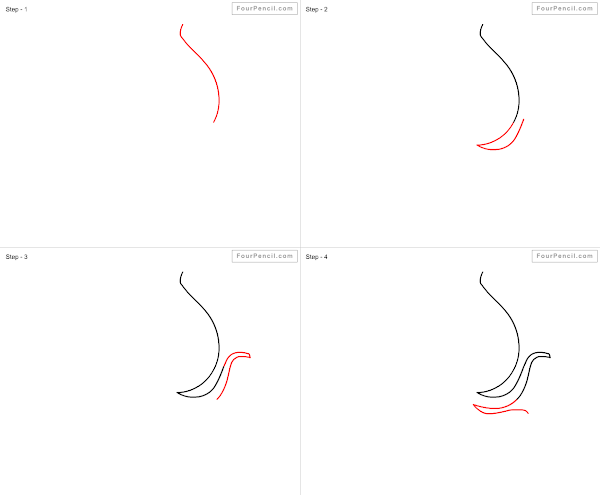
How to draw Octopus for Children - Fact - Octopuses have three hearts. Two branchial hearts pump blood through each of the two gills, while the third is a systemic heart that pumps blood through the body.

How to draw Octopus for Children - Fact - Octopus blood contains the copper-rich protein hemocyanin for transporting oxygen. Although less efficient under normal conditions than the iron-rich hemoglobin of vertebrates, in cold conditions with low oxygen pressure, hemocyanin oxygen transportation is more efficient than hemoglobin oxygen transportation.

How to draw Octopus for Preschoolers - Fact - The hemocyanin is dissolved in the plasma instead of being carried within red blood cells, and gives the blood a bluish color. The octopus draws water into its mantle cavity, where it passes through its gills. As molluscs, their gills are finely divided and vascularized outgrowths of either the outer or the inner body surface.

How to draw Octopus for Preschoolers - Fact - Octopuses are highly intelligent, possibly more so than any other order of invertebrates. The exact extent of their intelligence and learning capability is much debated among biologists,but maze and problem-solving experiments have shown evidence of a memory system that can store both short- and long-term memory.

It is not known precisely what contribution learning makes to adult octopus behavior. Young octopuses learn almost no behaviors from their parents, with whom they have very little contact.[citation needed]

An octopus has a highly complex nervous system, only part of which is localized in its brain. Two-thirds of an octopus's neurons are found in the nerve cords of its arms, which have limited functional autonomy. Octopus arms show a variety of complex reflex actions that persist even when they have no input from the brain.
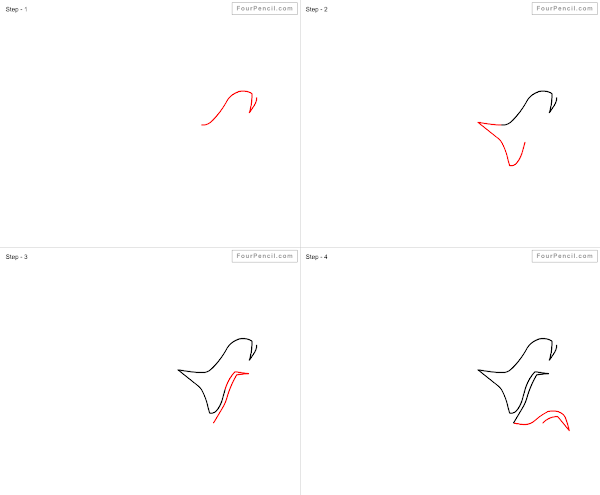
Unlike vertebrates, the complex motor skills of octopuses are not organized in their brain using an internal somatotopic map of its body, instead using a nonsomatotopic system unique to large-brained invertebrates.





 How to draw Octopus for kids - step by step - Fact - An octopus has no internal or external skeleton (although some species have a vestigial remnant of a shell inside their mantles), allowing it to squeeze through tight places. Octopuses are among the most intelligent and behaviorally flexible of all invertebrates.
How to draw Octopus for kids - step by step - Fact - An octopus has no internal or external skeleton (although some species have a vestigial remnant of a shell inside their mantles), allowing it to squeeze through tight places. Octopuses are among the most intelligent and behaviorally flexible of all invertebrates.  How to draw Octopus for kids - step by step - Fact - Octopuses inhabit diverse regions of the ocean, including coral reefs, pelagic waters, and the ocean floor. They have numerous strategies for defending themselves against predators, including the expulsion of ink, the use of camouflage and deimatic displays, their ability to jet quickly through the water, and their ability to hide.
How to draw Octopus for kids - step by step - Fact - Octopuses inhabit diverse regions of the ocean, including coral reefs, pelagic waters, and the ocean floor. They have numerous strategies for defending themselves against predators, including the expulsion of ink, the use of camouflage and deimatic displays, their ability to jet quickly through the water, and their ability to hide.  How to draw Octopus for kids - step by step - Fact - An octopus trails its eight arms behind it as it swims. All octopuses are venomous, but only one group, the blue-ringed octopus, is known to be deadly to humans.
How to draw Octopus for kids - step by step - Fact - An octopus trails its eight arms behind it as it swims. All octopuses are venomous, but only one group, the blue-ringed octopus, is known to be deadly to humans.  How to draw Octopus for kids - step by step - Fact - Around 300 species are recognized, which is over one-third of the total number of known cephalopod species. The term 'octopus' may also be used to refer specifically to the genus Octopus.
How to draw Octopus for kids - step by step - Fact - Around 300 species are recognized, which is over one-third of the total number of known cephalopod species. The term 'octopus' may also be used to refer specifically to the genus Octopus.  How to draw Octopus for kids - step by step - Fact - Octopuses are characterized by their eight arms, usually bearing suction cups. The arms of octopuses are often distinguished from the pair of feeding tentacles found in squid and cuttlefish. Both types of limb are muscular hydrostats. Unlike most other cephalopods, the majority of octopuses – those in the suborder most commonly known, Incirrina – have almost entirely soft bodies with no internal skeleton.
How to draw Octopus for kids - step by step - Fact - Octopuses are characterized by their eight arms, usually bearing suction cups. The arms of octopuses are often distinguished from the pair of feeding tentacles found in squid and cuttlefish. Both types of limb are muscular hydrostats. Unlike most other cephalopods, the majority of octopuses – those in the suborder most commonly known, Incirrina – have almost entirely soft bodies with no internal skeleton.  How to draw Octopus for kids - step by step - Fact - They have neither a protective outer shell like the nautilus, nor any vestige of an internal shell or bones, like cuttlefish or squid. The beak, similar in shape to a parrot's beak, and made of chitin, is the only hard part of their bodies.
How to draw Octopus for kids - step by step - Fact - They have neither a protective outer shell like the nautilus, nor any vestige of an internal shell or bones, like cuttlefish or squid. The beak, similar in shape to a parrot's beak, and made of chitin, is the only hard part of their bodies.  How to draw Octopus for kids - step by step - Fact - This enables them to squeeze through very narrow slits between underwater rocks, which is very helpful when they are fleeing from moray eels or other predatory fish. The octopuses in the less-familiar Cirrina suborder have two fins and an internal shell, generally reducing their ability to squeeze into small spaces.
How to draw Octopus for kids - step by step - Fact - This enables them to squeeze through very narrow slits between underwater rocks, which is very helpful when they are fleeing from moray eels or other predatory fish. The octopuses in the less-familiar Cirrina suborder have two fins and an internal shell, generally reducing their ability to squeeze into small spaces.  How to draw Octopus easy - step by step - Fact - These cirrate species are often free-swimming and live in deep-water habitats, while incirrate octopus species are found in reefs and other shallower seafloor habitats.
How to draw Octopus easy - step by step - Fact - These cirrate species are often free-swimming and live in deep-water habitats, while incirrate octopus species are found in reefs and other shallower seafloor habitats.  How to draw Octopus easy - step by step - Fact - Octopuses have a relatively short life expectancy, with some species living for as little as six months. Larger species, such as the giant pacific octopus, may live for up to five years under suitable circumstances.
How to draw Octopus easy - step by step - Fact - Octopuses have a relatively short life expectancy, with some species living for as little as six months. Larger species, such as the giant pacific octopus, may live for up to five years under suitable circumstances.  How to draw Octopus for Beginners - Fact - However, reproduction is a cause of death: males can live for only a few months after mating, and females die shortly after their eggs hatch. They neglect to eat during the (roughly) one-month period spent taking care of their unhatched eggs, eventually dying of starvation.
How to draw Octopus for Beginners - Fact - However, reproduction is a cause of death: males can live for only a few months after mating, and females die shortly after their eggs hatch. They neglect to eat during the (roughly) one-month period spent taking care of their unhatched eggs, eventually dying of starvation.  How to draw Octopus for Beginners - Fact - In a scientific experiment, the removal of both optic glands after spawning was found to result in the cessation of broodiness, the resumption of feeding, increased growth, and greatly extended lifespans.
How to draw Octopus for Beginners - Fact - In a scientific experiment, the removal of both optic glands after spawning was found to result in the cessation of broodiness, the resumption of feeding, increased growth, and greatly extended lifespans.  How to draw Octopus for Children - Fact - Octopuses have three hearts. Two branchial hearts pump blood through each of the two gills, while the third is a systemic heart that pumps blood through the body.
How to draw Octopus for Children - Fact - Octopuses have three hearts. Two branchial hearts pump blood through each of the two gills, while the third is a systemic heart that pumps blood through the body.  How to draw Octopus for Children - Fact - Octopus blood contains the copper-rich protein hemocyanin for transporting oxygen. Although less efficient under normal conditions than the iron-rich hemoglobin of vertebrates, in cold conditions with low oxygen pressure, hemocyanin oxygen transportation is more efficient than hemoglobin oxygen transportation.
How to draw Octopus for Children - Fact - Octopus blood contains the copper-rich protein hemocyanin for transporting oxygen. Although less efficient under normal conditions than the iron-rich hemoglobin of vertebrates, in cold conditions with low oxygen pressure, hemocyanin oxygen transportation is more efficient than hemoglobin oxygen transportation.  How to draw Octopus for Preschoolers - Fact - The hemocyanin is dissolved in the plasma instead of being carried within red blood cells, and gives the blood a bluish color. The octopus draws water into its mantle cavity, where it passes through its gills. As molluscs, their gills are finely divided and vascularized outgrowths of either the outer or the inner body surface.
How to draw Octopus for Preschoolers - Fact - The hemocyanin is dissolved in the plasma instead of being carried within red blood cells, and gives the blood a bluish color. The octopus draws water into its mantle cavity, where it passes through its gills. As molluscs, their gills are finely divided and vascularized outgrowths of either the outer or the inner body surface.  How to draw Octopus for Preschoolers - Fact - Octopuses are highly intelligent, possibly more so than any other order of invertebrates. The exact extent of their intelligence and learning capability is much debated among biologists,but maze and problem-solving experiments have shown evidence of a memory system that can store both short- and long-term memory.
How to draw Octopus for Preschoolers - Fact - Octopuses are highly intelligent, possibly more so than any other order of invertebrates. The exact extent of their intelligence and learning capability is much debated among biologists,but maze and problem-solving experiments have shown evidence of a memory system that can store both short- and long-term memory.  It is not known precisely what contribution learning makes to adult octopus behavior. Young octopuses learn almost no behaviors from their parents, with whom they have very little contact.[citation needed]
It is not known precisely what contribution learning makes to adult octopus behavior. Young octopuses learn almost no behaviors from their parents, with whom they have very little contact.[citation needed]  An octopus has a highly complex nervous system, only part of which is localized in its brain. Two-thirds of an octopus's neurons are found in the nerve cords of its arms, which have limited functional autonomy. Octopus arms show a variety of complex reflex actions that persist even when they have no input from the brain.
An octopus has a highly complex nervous system, only part of which is localized in its brain. Two-thirds of an octopus's neurons are found in the nerve cords of its arms, which have limited functional autonomy. Octopus arms show a variety of complex reflex actions that persist even when they have no input from the brain.  Unlike vertebrates, the complex motor skills of octopuses are not organized in their brain using an internal somatotopic map of its body, instead using a nonsomatotopic system unique to large-brained invertebrates.
Unlike vertebrates, the complex motor skills of octopuses are not organized in their brain using an internal somatotopic map of its body, instead using a nonsomatotopic system unique to large-brained invertebrates. 





















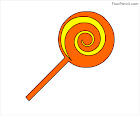
No comments:
Post a Comment